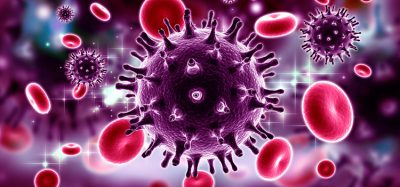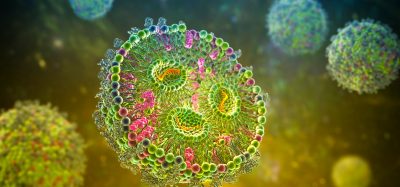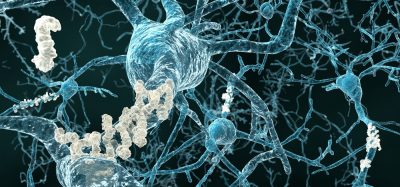Training and development in flow cytometry and other core technologies
Posted: 17 September 2019 | Derek Davies (Francis Crick Institute) | No comments yet
There is still much to be done regarding how training is delivered and monitored in core technologies such as flow cytometry. Here, Derek Davies outlines the approaches his team at The Francis Crick Institute are taking to train users of such technologies to ensure quality data is obtained and best practices are adhered to.


Flow cytometry is a laser-based form of quantitative and semi-automated fluorescence microscopy where multiple measurements are made on individual cells as they pass a sensing point. The technology is important in many areas of biology and medicine including immunology, haematology, stem cell research, cancer studies and clinical diagnosis (eg, of haematologic malignancies).
It may take several months of constant operation until an end user is completely confident in all aspects of the technology”
The flow cytometry market is predicted to be worth $5.5 billion by 2024,1 indicating the importance of the technology in many areas of biomedicine and beyond. Flow cytometers are commonly found in laboratories of universities, hospitals and in biotechnology/pharmaceutical companies. However, as with any piece of laboratory equipment, results are of the same quality as the input, which comprises several areas including sample preparation, cell staining, instrument quality control, experimental controls and data analysis.
A flow cytometer comprises several parts: light sources (generally but not exclusively lasers), fluidics, optics, light detectors, signal capture and processing and data display. All these parts must work together to enable a scientist to make robust, repeated and repeatable measurements on single cells. To obtain worthwhile data, there must be an understanding of sample preparation (few systems will be in 100 percent single cell suspension), sample staining (this may differ depending on the cell type being used), considerations of cellular autofluorescence and relative brightness of dyes (this may again change with the cell type being used), machine quality control and quality assurance (vital in the clinical environment and desirable everywhere), measurement of sensitivity and resolution (which may vary with cytometer setup, for example lasers and optical filters), effectiveness of light collection (dependent on the optical pathway in the cytometer), which detectors to use (the difference between photomultiplier tubes and avalanche photodiodes, for example) and signal processing and digitalisation. Even if an assay is simple – for example, drug screening using a viability as a reporting metric – there is a need to understand how the data is produced to correctly interpret results and recognise, diagnose and fix issues when something goes wrong. It may take several months of constant operation until an end user is completely confident in all aspects of the technology.
Training in flow
In my experience, flow training can often occur haphazardly. It may be provided by the instrument manufacturer, but often this is only upon installation, or it may be provided in-house by current users of the equipment. Generally, training from the manufacturer is enough to enable data generation and routine troubleshooting, but understanding the principles that underpin any technology is vital. Training in labs may be handed down from post-doc to post-doc within and between labs. Consequently, this can lead to inaccuracies and incorrect assumptions, which in turn can result in poorly maintained and quality-controlled machines as well as subsequent errors in data interpretation. This is especially important in the area of high-dimensional multiparameter data, where a good comprehension is required of the biological question being asked and the quality of the data used to generate output that may be fed into an automated analytical pipeline. Appropriate and standardised training also helps with rigour and reproducibility2 and adherence to best practices, which has been addressed to a degree in the flow cytometry field.3
Considerations for flow training
Training can take many forms and should therefore be off ered in multiple forms. People learn in different ways – some will digest more in a classroom situation whereas others are more visual and practical learners. As both aspects are important in flow cytometry, both should be offered. Our approach is for users of analytical flow cytometers to attend a short (90 minute) theory seminar on flow cytometry and then have three to four two-hour practical sessions before they can book and work independently. We also train users to operate cell sorters, which is slightly more intensive – a two-hour theory seminar followed by three to four half-day sessions under supervision. As with all training, defining and deriving an appropriate metric or metrics of success is vital. It is not uncommon for users to be offered a test of some sort after their training – this will at least produce an idea of whether knowledge has been retained in the short term. However, to show excellence in training there must be further definition. Training people to not just be competent but to have the capability to adapt their learning to new situations is essential.
To organise appropriate training, several areas need to be considered:
- What are the needs of the field and what are our aims? The foundation will be understanding the principles that underpin any flow cytometric experiment to get to the point where this could be delivered via a standardised course agreed with and delivered by, or supported by, subject matter experts.
- How should the course look? What is the agreed content and how is this organised?
- What teaching methods and strategies should be used? This would relate to the actual delivery and a broad portfolio of offering would be preferable.
- How should we assess outcomes?
- Who takes care of the administration and management of the course delivery?
Course content, course delivery and course output should all be monitored to ensure high quality. You also need to develop metrics that demonstrate how courses improve over time. Using delegates’ perception of a training course can sometimes be too subjective; to be more objective, criteria must be developed that allow for the assessment and measurement of an increase in competence. There is a need to separate the enjoyment of a course (subjective and dependent on teachers) from the benefits (which can hopefully be metricised).5 Often this is immediate via a survey or short quiz. It is also useful to follow up on trainees – if you want to show you have ‘raised the bar’ this needs to be followed up over many years, which is a current challenge for us. A combination of formal assessment and follow-up appears to be the best way. All training needs review, adjustment and amendments. There are many approaches that can be taken and it is essential to adopt a system that works.
Conclusions and future developments
Any institution or company is dependent on both the competency and capability of its staff. Competence allows accurate work to be performed at a defined level and most organisations would have in place a standard operating procedure (SOP) to, for example, run quality control (QC) and quality assurance (QA) on a cytometer. Capability comes with experience and/or advanced training and allows one to adapt to a new situation using secure knowledge, although this can be a long process.
Knowledge and training at a local level already exists, but there is a need for more content curation and an ability to ‘train the trainer’. Flow cytometry is only one of several technologies that are often centralised. A model developed for flow cytometry training could also be applicable to facilities that are generally centralised such as light microscopy, electron microscopy, genomics, proteomics, metabolomics and bioinformatics, as well as other areas such as histopathology, chemical biology and antibody production. By adopting and disseminating educational best practices, we hope to raise the skill level of all those involved with technology‑based experiments, from technicians to experience post‑doctoral researchers.
Our training approach
A central remit of the Francis Crick Institute is to collaborate and help develop UK science4 and we promote collaborations at all levels across the UK scientific community. One way in which this can be supported is via training in the key technologies that underpin research in many biomedical research institutes and the pharmaceutical and biotechnology sectors. The Francis Crick Institute houses 18 core facilities, or Science Technology Platforms (STPs), all of which have specific expertise in their own technology. A training lead role has been specifically developed to set up a national training scheme that could take multiple forms including, but not limited to, face-to-face courses (both theory and practical), remote support, webinars, web-based courses and so on. The idea is to develop a cohort of subject matter experts who could deliver Crick-curated material when needed at multiple locations. The use of a team of experts is crucial as it is increasingly difficult for an institute to have expertise in all leading-edge technologies. Ultimately, we aim to increase competence and capability within the core technologies, which would lead to a capacity building in many research workplaces allowing more end users to take advantage of the technology and produce more and more robust data.
About the author
Derek Davies’ career in flow cytometry started with an MRC-funded project investigating DNA content and antigen expression in cervical cytology specimens. In 1990 he moved to what was the Imperial Cancer Research Fund Laboratories in Central London where he ran the Flow Cytometry Core Facility for many years. In 2015, with the formation of the Francis Crick Institute, he oversaw the merger of two core Flow Laboratories to form the largest facility of its type in Europe. Recently he has moved to a new role specifically created to support education and training in core facilities technologies.
References:
- https://www.marketwatch.com/press-release/flow-cytometrymarket-is-expected-to-touch-a-value-of-us-550-billionby-2024-2019-03-12
- Begley CG, Buchan AM, Dirnagi U. Robust research: Institutions must do their part for reproducibility. Nature 2015 525, 25-27
- Barsky L, Daniel BJ, Davies D, DeLay M, Gardner R, Gregory M, Kunkel D, Lannigan J, Marvin J, Salomon R, Torres C, Walker R. International Society for Advancement of Cytometry (ISAC) flow cytometry shared resource laboratory (SRL) best practices. Cytometry A 2016 89, 1017-30
- https://www.crick.ac.uk/about-us/our-vision
- Lambert N. Ban happy sheets! Understanding and using evaluation. Nurse Education Today 2012, 21, 1-4
Related topics
Analytical Techniques, Assays, Flow Cytometry, Microscopy, Technology, Training
Related organisations
IntelliCyt Corporation








